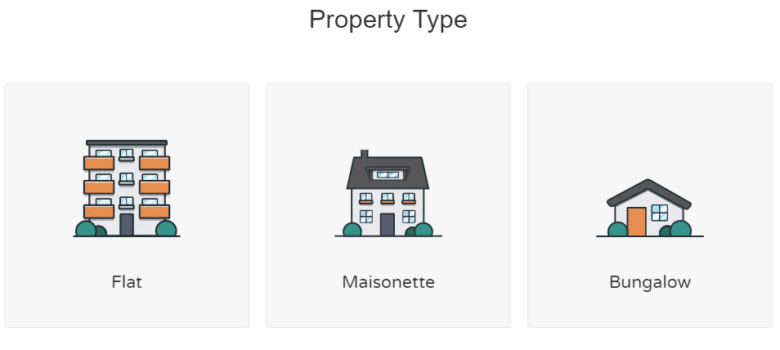
The Energy Company Obligation has been going for several years now. It is a scheme whereby the energy companies help pay for energy saving improvements, with each company bidding to pay for these improvements via a rather complicated bidding system. The important bit for the consumer is that various installation companies get allocated a certain amount of funding, dependent on the amount of carbon that will be saved by making the said improvement.
In the past, the amount of carbon saved was calculated via an Energy Performance Certificate or EPC. This meant an energy assessor visiting the property and putting lots of data about the house (insulation, boiler, layout etc) into a piece of software, and that software produced a figure for the amount of carbon saved. This could then be used to claim the grant money.
In the latest release of ECO funding, this has all changed. Under the new scheme, each home is given a ‘deemed score’ – basically, a projected carbon saving based on some very simple characteristics of the property. The idea is to simplify the process and remove the need for the energy assessor, but for the customer it also has the added benefit of making things a little more transparent as to the amount of funding a company is going to get from your job.
How can I work out my deemed ECO score?
The process is pretty simple – you simply need to fill out some basic information about your property into this site, and your deemed CO2 savings will be displayed.
Firstly, enter the type of property you have. The tool will ask you for the detachment, number of bedrooms, whether it is a flat, house or maisonette, and the type of heating system you currently have.
Once this is entered, you will need to tick the box on the left hand side of the page corresponding with the type of measure you are looking to get installed. There are tick boxes for cavity insulation, solid wall insulation, new boilers, solar and much more. Each measure will have a few measure specific questions, such as build age of the property, and the amount of the property being worked on.
Once you complete this, you will get two figures appear, a cost-saving figure and a CO2 figure. These figures are fixed whichever installer you use, so you should be able to use them to find out what grant you will get from your installer, or use them to shop around and find the best deal.

The funding also varies depending on the measure you are getting installed, but at the time of writing, funding was around £25-£30 per ton on CERO, and 18p per £ of lifetime saving on HHCRO.
What price do you get per ton of CO2?
The amount of funding available per ton of carbon will vary from provider to provider and over the course of time as well, but the figures we gave above can be used to give you a good idea of the funding available. If you plug the above into the deemed scores calculator, you should get a ECO values figure pop up in the measure to the right. This figure is the amount of funding paid out for this specific measure in a house like the one you have specified.
The below examples assume £25 per ton on CERO and 15p/£ of lifetime saving for HHCRO. This figure can vary.
Example 1 – 1 bed flat with 2 sides of external walls and electric storage heaters
| Measure | Lifetime Saving | HHCRO Grant | CO2 Saving | CERO Grant |
| External Wall Insulation | £15,038 | £2,256 | 41.88 | £1,047 |
| Cavity Wall Insulation | £8,096 | £1,214 | 21.9 | £547
|
| Loft Insulation Top Up (less than 100mm existing) | £9,199 | £1,380 | 24.85 | £621 |
| Replacement Storage Heaters | Not Eligible | Not Eligible | Not Eligible | Not Eligible |
| Flat Roof Insulation* | £16,545 | £2,482 | 58.47 | £1,462 |
*Assumes whole property has a flat roof.
Example 2 – 2 bed maisonette with 3 sides of external walls and a gas communal heating system
| Measure | Lifetime Saving | HHCRO Grant | CO2 Saving | CERO Grant |
| External Wall Insulation | £16,609 | £2,491 | 51.45 | £1,286 |
| Cavity Wall Insulation | £9,174 | £1,376 | 27.58 | £689
|
| Loft Insulation Top Up (less than 100mm existing) | £2,548 | £382 | 7.65 | £191 |
| Replacement Storage Heaters | Not Eligible | Not Eligible | Not Eligible | Not Eligible |
| Flat Roof Insulation* | £4,560 | £684 | 17.93 | £448 |
*Assumes whole property has a flat roof.
Example 3 – 5 bed detached house with gas central heating
| Measure | Lifetime Saving | HHCRO Grant | CO2 Saving | CERO Grant |
| External Wall Insulation | £36,941 | £5,541 | 114.48 | £2,862 |
| Cavity Wall Insulation | £20,372 | £3,056 | 61.26 | £1,531 |
| Loft Insulation Top Up (less than 100mm existing) | £6,591 | £999 | 19.83 | £496 |
| Replacement Gas Boiler | £2,495 | £374 | Not Eligible | Not Eligible |
| Flat Roof Insulation* | £11,759 | £1,763 | 46.22 | £1,156 |
*Assumes whole property has a flat roof.
Example 4 – 4 bed semi-detached house with no heating installed
| Measure | Lifetime Saving | HHCRO Grant | CO2 Saving | CERO Grant |
| External Wall Insulation | £63,289 | £9,493 | 98.44 | £2,461 |
| Cavity Wall Insulation | £35,196 | £5,279 | 53.12 | £1,328 |
| Loft Insulation Top Up (less than 100mm existing) | £12,796 | £1,919 | 19.3 | £483 |
| Replacement Gas Boiler | £2,495 | £374 | Not Eligible | Not Eligible |
| Flat Roof Insulation* | £22,471 | £3,371 | £44.34 | £1,109 |
*Assumes whole property has a flat roof.
What is the ‘lifetime saving’ figure?
This simply estimates the amount of money you will save by having this measure installed over the lifespan of the product. For example, external insulation assumes a lifespan of 25 years, whereas a boiler has an expected lifespan of 12 years. Each measure will have its own assumed lifespan, but many of these measures can and often do last much longer than this.
Think we missed something? Do you have a different opinion?
Comment below to get your voice heard…












i live in northumberland
who would help with grant for a boiler and insulation
im on esa icome related ne63 0xq northumberland my baxi boiler is 30 yrs old
my back boiler is very old would I qualify for help I’m claiming pension credits
I whant to apply for a grant to help me to install a new windows and doors
I whant to apply for a grant to help me to install a windows and doors.
WEe have 27 flats on 3 floors in 2 blocks Area of flat roof 940sqm. I understand the Government hides behind the Benefit Sytem and the Energy Companies on insulation grants, etc and the DO NOT cover Flat Rofing insulation. Why? Not very green is it? Help please!
Hi Steve.. Inbox me… i work along side various installers, covering All measures.
Steve, the ECO grant now only covers the Affordable Warmth element. So as you rightfully said people on entitlements. I am not really sure why they dropped the carbon target but there you go. I assume they will be doing things again from this year after the current pandemic is under more control. We need to have some schemes open to the wider public.